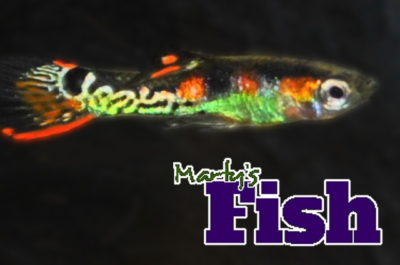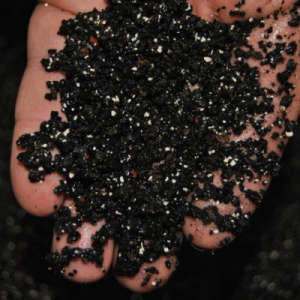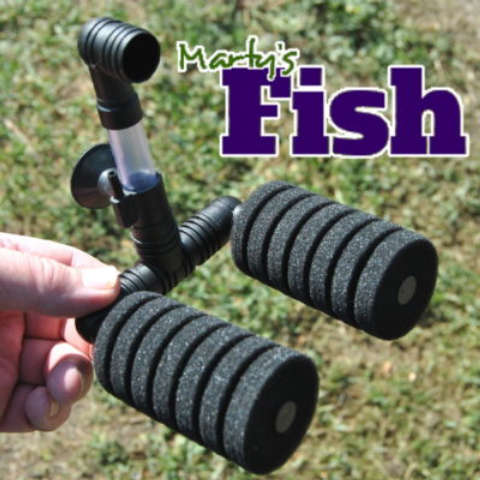Welcome: Guppies, Endlers & More
Our goal is to share information concerning the fish we keep, especially Endlers and wild type guppies.
The strains and types of fish we keep change from time to time depending on our interest and available space. Because we have limited space we usually don’t keep weak strains or strains that don’t produce well.
Raising tropical fish has been a hobby of our family for many years. We have a special fondness for Endlers and Endler Hybrids.
Our goal is simple, to share as much information as we can about Endler, Endler Hybrids and other tropical fish as we can for the benefit of the tropical fish hobby.
A few years ago we move to another location where we could expand our hobby. Unfortunately, we found a more appropriate use for the extra space and our fish room size actually decreased.
Another reason we decided not to expand is that we love our hobby and we don’t want it to become a daily drudgery. Our goal is to keep between our fish room small with between 30-50 tanks running at any given time.
We really prefer 40-gallon aquariums or larger to keep our fish however due to our limited space most of our aquariums at this time have been reduced down to 10 gallons with a few 20 gallons as well.
The Information Found On This Website
While we do our best to present the most accurate information possible. Our information is based on our experiences and things may change over time.
What works for us may not work for you and your experiences may differ from ours. This is because there are a number of variables that affect how fish should be kept.
About Our Aquariums And Fish
We would like to share a little more information about us and how we keep our fish. Our hope is that you may find some of this information helpful. We would be grateful to hear your comments and learn from your experiences.
How It All Began

In the 1980’s I worked at a pet shop in our local mall called Docktor Pet Center. Each employee specialized in certain things mine was fish and tarantulas.
At that time the most common type of filtration system used for home aquariums was the small box filters that had filter floss and activated charcoal in them. Undergravel filters and gravel vacuums were just starting to become popular at that time.
Fish Keeping Experience
While at the pet shop I learned that keeping fish didn’t have to be hard. Fishkeeping could be much easier if you let nature do the majority of the work.
Over the years I raised several types of freshwater tropical fish and even dabbled a bit in the saltwater hobby. I found keeping saltwater fish to be very enjoyable.
The cost of keeping a saltwater aquarium and living in apartments keep me from keeping large saltwater tanks.
What Are Endlers?
In 2012 my family and I became interested in Endlers.
In February of 2013, we contacted Adrian Hernandez concerning the availability of N Class Endlers. At the time he was about the only person you could get N Class Endlers from. After looking over the stock he had to offer we purchase our first few trios of N Class Orchid Endlers. We particularly liked the Orchid Endler strain due to the high amount of variation and their unique coloration.
I wasn’t a fan of the huge fins that seemed to inhibit the natural activity of the Fancy Guppies. Endlers offered a more wild look similar to wild or feral guppies found in nature except with a much brighter color palette in most cases.
Keeping the Endlers in a 55-gallon aquarium helped our Endlers to thrive. We soon found ourselves with several more tanks as we selectively bred our beautiful Endlers.
In 2014 we found an amazing looking adult male Endler mixed in our N Class Orchid Endler Colony. This male would later become the start of our N Class Snakeskin Orchid Endler strain.
At about the same time we ordered another order of Endlers from Adrian Hernandez. These were absolutely stunning N Class Lime Green Endlers.
We still continue to keep these beautiful strains today. Years of selective breeding have made these strains even more beautiful as we continue to work with them.
How We Keep Our Fish
Our aquariums are set up to create the best environment we can provide for our fish. This is not always the most aesthetically pleasing way to set up an aquarium.
Our passions are the fish: keeping fish, breeding fish, improving fish. The beauty of the aquarium itself usually is secondary.
We enjoy breeding the fish to produce the highest quality fish possible and improve on the strains where we can. We don’t focus on beautiful aquariums or aquascapes although we have great admiration for those who do.
Tank Size
It’s our belief that when it comes to tank size bigger is better. Larger tanks tend to be more stable both in water quality and temperature.
Although we started with a 55-gallon aquarium, we prefer the 40-gallon breeder. The 40-gallon breeder tank has a larger surface area and helps to provide better air exchange in the aquarium.
Although we enjoy our larger tanks most of our aquariums are 10 gallons as they are the least expensive. These smaller tanks also help to make it easier for us to continue the selective breeding process.
If we had more room we would most likely increase the size of our tanks.
Aquarium Rack
Metal Racks
With the number of aquariums we enjoy and our limited space, we make use of aquarium racks.
When we first tried to set up some aquarium racks we used some of the metal ones that are commonly found in hardware stores. Although these racks were rated to carry much more weight than our aquariums, we found them to be somewhat flimsy and were concerned about long term safety.
These racks were also somewhat limited as to exactly where the shelves could be so we couldn’t put as many aquariums on them as we would have liked. Larger commercial grade racks were available but they were simply too large and costly for our situation.
Wood Racks
Eventually, we started making our own racks out of lumber. We tried several designs trying to maximize the space. Shelves placed near the floor were difficult to maintain because we couldn’t see the fish well. It was also difficult to siphon water out of the tanks to do partial water changes.
We tried several designs some that would hold 2 levels of aquariums and some that would hold three. Ideally, we enjoy the racks with two levels of aquariums the best however we do still use some three-level racks.
The three-level racks are a bit tall and the space between the aquariums is smaller making it a little more difficult to net fish.
The two-level racks are set up so the top row is just below eye level making it easy to take care of the fish and maintain the aquariums. The second row is easily be observed by sitting on a stool.
Over the years we have found that it’s easiest for us to keep the tanks a close to eye level as possible. Tanks that require stooping or kneeling seem to get neglected more often than they should and are more difficult for us to maintain.
Substrate

The way our aquariums are maintained, we feel that the substrate plays a major role in our aquarium filtration and overall health of our fish. To help keep as much beneficial bacteria alive in the aquarium as possible we like to keep between 1″-2″ of a substrate in the tank. We prefer closer to 2″ but it’s not a hard and fast rule for us.
Our preferred substrate is the black CaribSea Eco-Complete® Planted Aquarium Substrate, CaribSea FloraMax® Planted Aquarium Substrate, Flourite® Premium Aquarium Plant Substrate or a similar product. We enjoy the black color as it helps to set off the beautiful colors of our Endlers.
These substrates are highly porous and provide more surface area than regular aquarium gravel which we feel gives more area to produce beneficial bacteria in our aquariums. These substrates also help to provide some basic nutrients for our plants for a time.
Although these substrates appear to be more expensive than regular aquarium gravel, we feel that because they are lighter than regular aquarium gravel they are nearly identical in cost when comparing them by volume rather than weight.
Lighting
Due to the number of tanks we keep and in an effort to keep electrical costs at a minimum most of our lights are low cost, low light LED lights. We feel that the type of or intensity of the light is not as important to the fish as the duration of the light.
Plants
Plants are not our main focus, in fact, most of our aquariums don’t provide an environment that is conducive to producing healthy plants. Although plants are not our main focus we do recognize and utilize the benefits that plants provide.
We do our best to keep as many plants in our aquariums as possible. We believe that the plants are another important part of the filtration process in our aquariums.
Cryptocoryne wendtii?
Because we use very low lighting and sometimes add salt to our aquariums we have found two plants that seem to do well in our tanks; Java Moss and what we believe to be Cryptocoryne wendtii. The Cryptocoryne wendtii we first purchased at a local PetCo did not have a label.
We have attempted to grow many other types of plants including other types of Cryptocoryne however we believe that all of them have died over time except for a couple of Anubias nana “petite” which have managed to live for over a year.
Another “plant” that we believe is beneficial to our aquariums is algae. We usually leave any algae that grow on the aquarium glass, except for in the front, alone as our Endlers enjoy grazing on it giving the Endlers a food source throughout the day or when we are out of town.
Although we have had great success with Cryptocoryne and Java Moss we continue to look for other plants that we feel may do well in our aquariums.
Filtration

Filtration can mean different things to different people. For us, filtration is a process of providing the most stable environment possible for our fish.
This process uses a combination of plants and bacteria to convert waste that is produced by the fish into something that can be used by the plants and is less toxic to fish.
We attempt to create an environment that helps to produce as much beneficial bacteria as possible.
The bubbles produced by sponge filters pop at the surface of the water and helps to aerate the water as well as provide a place for beneficial bacteria to grow.
There are many other types of filters that are work just as well or better however due to their low cost and low maintenance and because we don’t care what they look like we find these to work best for us at this time.
The sponge filters along with the gravel and other surfaces in the aquarium provide a place for the beneficial bacteria to grow. Bacteria help to break down toxins and waste into nitrates which can be used by the plants.
We have used the double sponge type sponge filter in the past but find that the suction cups that are used to hold them to the glass eventually fail. Little by little, we have been converting our tanks to the round single sponge type sponge filters that use weight rather than suction cups to keep them in place.
Heating
We have used several brands of submersible aquarium heaters over the years. Although they work just fine we have had a couple of instances where aquarium heaters have failed causing fish to die.
Because we don’t feel 100% confident with the use of the aquarium heaters as well as an attempt to reduced costs, we are currently experimenting with whole room heating rather than using individual aquarium heaters.
Fish: Endlers, Guppies and More
We love to breed all kinds of fish, especially Endlers and wild type guppies. Due to our limited space, most of the fish we keep and breed are small. We particularly enjoy keeping Endlers due to their bright colors and because it’s so easy to selectively breed them for those traits we find most desirable.
The Future of Endlers
When we decided to keep Endlers we felt it was important to keep at least a few strains of pure N Class Endlers. It is our belief that over time captive Endlers and guppies will become one and the same due to hybridization whether done intentionally or accidentally.
There is also quite a bit of dispute as to the purity of Endlers found in the wild. Some hobbyists believe that many of the Endlers collected in the wild have naturally hybridized with guppies. Others believe that wild Endlers prefer their own species even when in the presence of guppies.
Having never been to Venezuela and not having a scientific background, equipment or knowledge to do genetic testing, it’s impossible to determine which Endlers are 100% pure and which ones are not.
Although it’s impossible for us to know if an Endler from the wild is 100% pure or not our goal is to keep our colonies as pure as they were when we first received them.
Food
Our fish enjoy good quality crushed flake food most of the time. Golden Pearls, a food designed as a baby brine shrimp substitute are eagerly accepted.
We often try new foods however our fish are not demanding and stay healthy without specialized diets or lots of live foods.
We believe that leaving some algae in our aquariums is beneficial to our Endlers and helps improve water quality.
Our Articles
We hope you enjoy our blog articles. We do our best to provide the most accurate information possible. The way we do things from time to time as we try different products and procedures.
Please remember that the information we provide is from our perspective, observed from our unique situation. We hope you might find this information useful.
